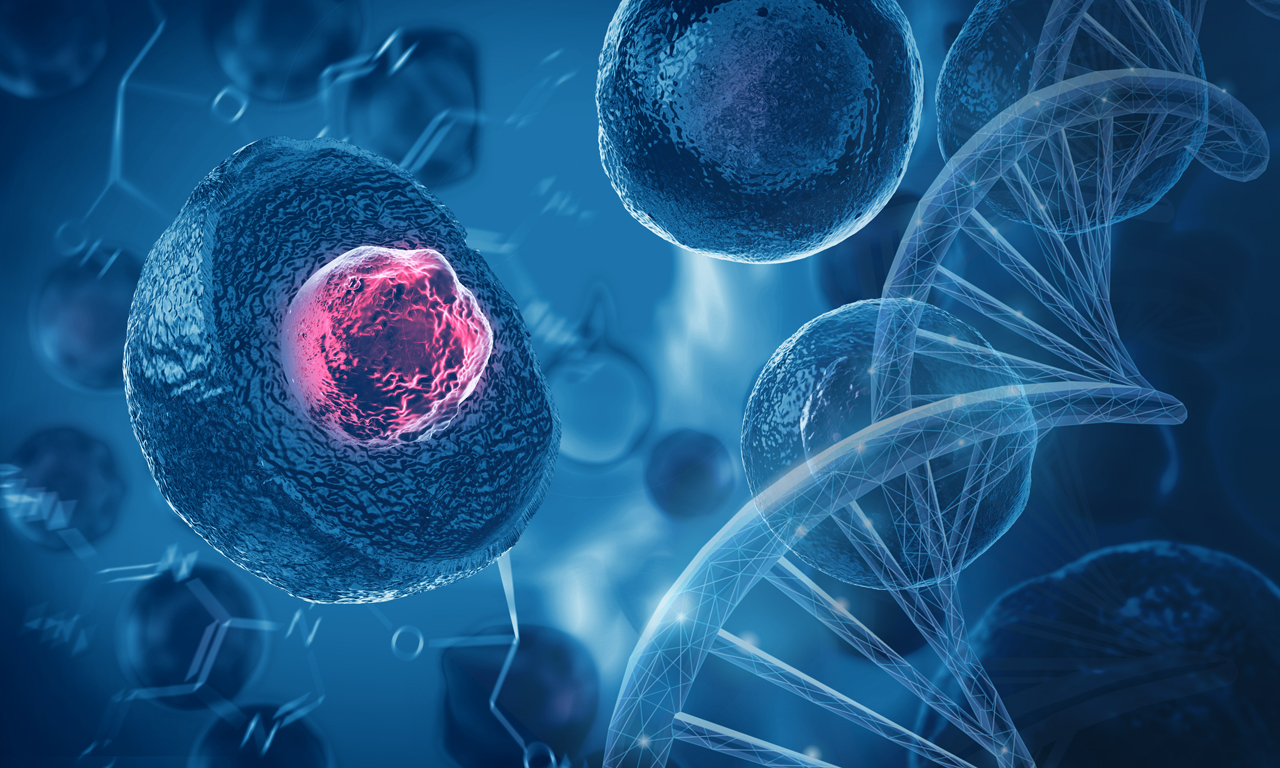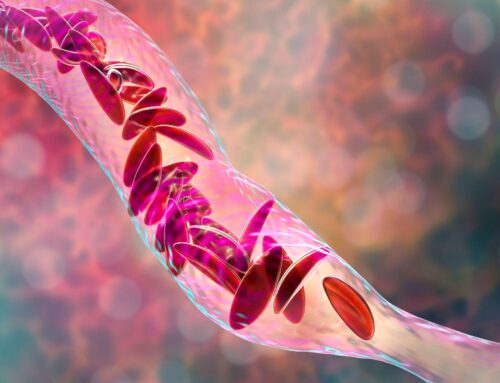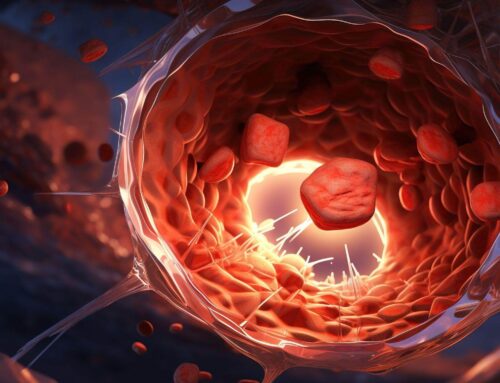Looking for something?
New Miniature CRISPR-Cas Systems Engineered to Function in Human Cells

CRISPR-Cas systems provide a revolutionary approach to curing disease through precise genome editing and CRISPR therapies have delivered promising early successes. However, engineering more highly efficient, compact Cas systems could result in a more versatile tool that could greatly improve and expand CRISPR-based therapeutics. As Dr. Stanley Qi pointed out, rather than viewing CRISPR as genetic scissors, it may be time to reimagine it as a multifunction Swiss Army knife.
CRISPR-Cas systems, which we have previously discussed, consist of a guide RNA (gRNA) molecule and a Cas enzyme, which is a cutting protein that cleaves DNA or RNA. The most commonly used cutting components are Cas9 and Cas12a, which are rather large, consisting of 1,000 – 1,500 amino acids. Because of their size, in vivo cell delivery is difficult, as delivery systems do have maximum payload capacities. Adeno-associated virus (AAV) vectors that are widely used for in vivo delivery have a capacity that is lower than many of the CRISPR-Cas systems.
Smaller Cas systems could provide better opportunities for developing clinical therapies. More compact Cas enzymes do occur in nature but do not often function efficiently in mammalian cells.
Researchers at Stanford University have engineered a miniature Cas system that is functional in mammalian cells from the Cas12f system (also called Cas14), which is not naturally functional in mammalian cells. The system, which they call CasMINI, is much smaller than currently used systems, with 529 amino acids. This compact, efficient system can delete, activate, and edit genetic code, allows for base editing and robust gene editing, and is highly specific (1).
Xiaoshu Xu, a postdoctoral scholar in the Qi lab and the lead author of this research, hypothesized with Dr. Stanley Qi that the complexity of the human genome DNA originally made it difficult for Cas12f to find its target. The team optimized the single guide RNA (sgRNA) design to improve gene activation. They also found mutations in the protein that could possibly circumvent this limitation and began testing many variants using an iterative protein engineering strategy to test the effect of dCas12f protein on gene expression. The goal was to create a working variant that would hypothetically turn a human cell green by activating green fluorescent protein (GFP) in its genome. After many rounds of modifications, nearly every cell would turn green.
The optimized single guide RNA (sgRNA) combined with the engineered Cas12f protein variants generated a class of Cas12f variants that, when fused to a transcriptional activator, could delete and edit nearly every gene they tested, including genes related to anti-tumor immune response, HIV infection, and anemia. Many genes displayed robust responses with gene activation comparable to that of Cas12a. (The team compared CasMINI to Cas12a because they share an overlapping PAM, which makes it possible to directly compare their performance side by side using guide RNAs that target the same genetic sequence.) CasMINI-mediated activation is highly specific in mammalian cells without detectable off-target effects.
They also tested whether CasMINI could be used for base editing. The design, dCasMINI-ABE, allowed for base editing, but careful sgRNA target design is necessary to do this type of editing efficiently. The team also compared nuclease-active versions of CasMINI to determine if it was useful for gene editing. Robust gene editing was observed and, interestingly, the data suggested that CasMINI variants which provide the best gene activation may be different from the variants that enable optimal gene editing. Further analysis of indel patterns confirmed that CasMINI can be used in broad genome editing applications. “CasMINI provides a useful tool for broad genome engineering applications that require compact Cas fusion proteins for delivery and cellular function” (1).
Because of the small size, CasMINI is suitable for a wide range of therapeutic applications and can easily be packaged into AAVs, lipid nanoparticles (LNPs), and other RNA-delivery modalities, for a broad range of delivery methods. The team also believes that it may be less immunogenic compared to systems with larger protein payloads. It was noted that more work is needed in testing additional protein variants and sgRNA variants to optimize the efficiency for base editing and gene editing, and future work is also needed to optimize CasMINI for other contexts as well. Despite the work still to be done, the current findings are excellent because CasMINI’s smaller size means it should be easier to deliver into cells in the human body, “making it a potential tool for treating diverse ailments, including eye disease, organ degeneration and genetic diseases generally.” CasMINI could also possibly be used to reprogram stem cells and engineer better tumor-destroying lymphocytes (1).
Qi believes that they are the first to make a non-working CRISPR functional in human cells. Amazingly, this Cas system that was previously non-functional in human cells has been engineered so that it is now highly efficient in human cells.
While unique in many ways, this groundbreaking work is not alone. At least three other groups have recently published their work on engineering miniature Cas systems.
Wu et al. harnessed AsCas12f1, only 422 amino acids long, as a genome editing tool in human cells. They found that AsCas12f1 cleaves ssDNA in a PAM-independent manner and demonstrated that ASCas12f1 is a programmable RNA-guided dsDNA nuclease that can function in both bacteria and human cells as a genetic manipulation tool. Furthermore, plasmid, ribonucleoprotein, and adeno-associated virus delivery methods were used, which proves that it may be a solution that allows for easier delivery. The CRISPR-AsCas12f1 packaged into an AAV was efficiently transduced into human cells and successfully induced indels in VEGFA and PDCD1 genes. The compact system with its minimal PAM requirement offers easier cellular delivery and a wider range of targetable genomic loci (2).
Kim et al. intensively remodeled the gRNA for Un1Cas12f1 through five rounds of engineering. This reduced the gRNA size significantly and transformed the CRISPR-Cas12f system into a highly efficient and specific genome editing tool when delivered by an AAV vector. The Cas12f system could potentially provide a scaffold for applications such as CRISPRi, CRISPRa, base editing, prime editing, and site-specific epigenetic regulations. Genetic disorders such as Duchenne Muscular Dystrophy, Leber Congenital Amaurosis 10, and Usher Syndrome type 2A can potentially be treated by deletion of pathogenic intron or exons and they noted that results showed that CAS12f is particularly efficient in this. Therefore, “Cas12f might be particularly useful for AAV delivery in gene therapy applications that require deletions” (3).
Finally, Kannan et al. identified ultracompact variants of Cas13b that are active in mammalian systems and support programmable RNA editing. This family of proteins, Cas13bt, can mediate mammalian transcript knockdown. Compact variants of REPAIR and RESCUE RNA editors were engineered, which were then packaged in a single AAV. Further engineering decreased off-target effects without reducing on-target activity. “The small size of Cas13bt proteins provides new opportunities for programmable RNA modulation, particularly in vivo” (4).
Current CRISPR-Cas systems are providing astonishingly successful solutions to treating genetic diseases. We have seen proof of this in the recent early results in a trial using systemically administered CRISPR for an in vivo gene editing therapy to treat ATTR amyloidosis. Despite the incredible successes, CRISPR-based therapies do still have room for improvements, and one of the improvements could be made through engineering smaller Cas systems. As research into miniature Cas systems shows, engineering more compact systems is sure to help advance the platform. This ultimately could result in creating therapies that, until recently, would have been considered miraculous, fantastical ideas such as curing genetic diseases, engineering lymphocytes to cure cancer, and reprogramming stem cells that might be used to regenerate diseased and damaged tissue.
References:
- Xu X, Chemparathy A, Zeng L, Kempton HR, Shang S, Nakamura M, Qi LS. Engineered miniature CRISPR-Cas system for mammalian genome regulation and editing. Mol Cell. 2021 Aug 26:S1097-2765(21)00648-1. doi: 10.1016/j.molcel.2021.08.008. Epub ahead of print. PMID: 34480847.
- Wu Z, Zhang Y, Yu H, et al. Programmed genome editing by a miniature CRISPR-Cas12f nuclease. Nature Chemical Biology. 2021 Sep. DOI: 10.1038/s41589-021-00868-6. PMID: 34475565.
- Kim DY, Lee JM, Moon SB, Chin HJ, Park S, Lim Y, Kim D, Koo T, Ko JH, Kim YS. Efficient CRISPR editing with a hypercompact Cas12f1 and engineered guide RNAs delivered by adeno-associated virus. Nat Biotechnol. 2021 Sep 2. doi: 10.1038/s41587-021-01009-z. Epub ahead of print. PMID: 34475560.
- Kannan S, Altae-Tran H, Jin X, Madigan VJ, Oshiro R, Makarova KS, Koonin EV, Zhang F. Compact RNA editors with small Cas13 proteins. Nat Biotechnol. 2021 Aug 30. doi: 10.1038/s41587-021-01030-2. Epub ahead of print. PMID: 34462587.








